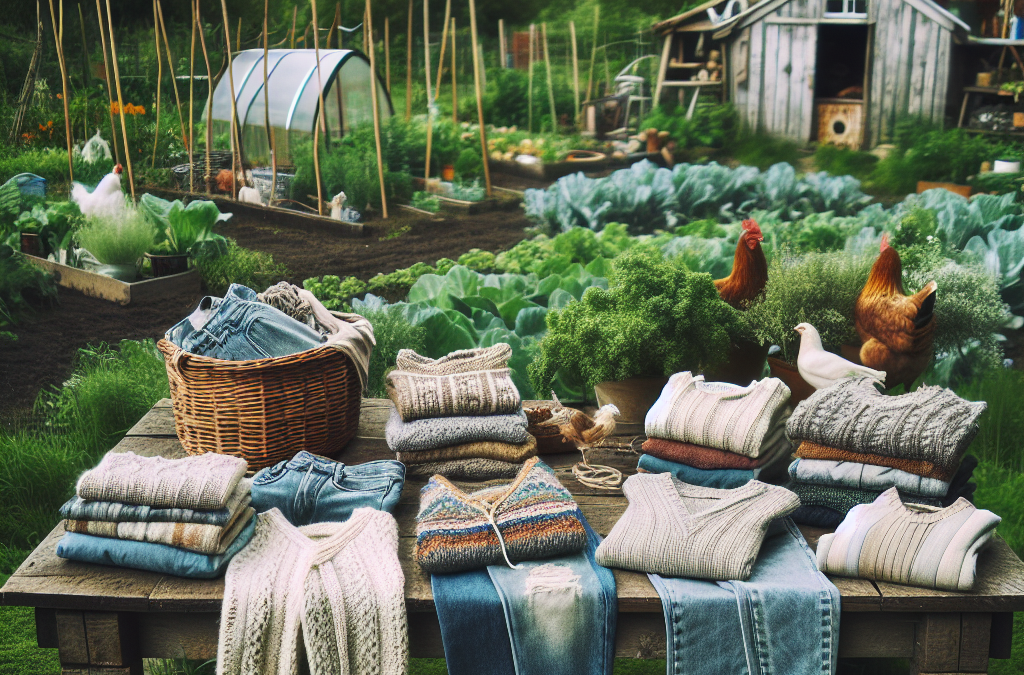Environmental Impact
Understanding Your Footprint
Let’s face it, we live in a world where our choices resonate beyond our immediate vicinity. When I first started my journey into homesteading, I didn’t realize how much my clothing choices contributed to environmental degradation. Synthetic fibers, for example, can take hundreds of years to decompose, and every time we wash synthetic garments, tiny microplastics find their way into our oceans, further harming aquatic life.
By opting for sustainable fabrics like organic cotton, hemp, or linen, we can significantly reduce our environmental footprint. Not only do these materials break down naturally, but they also often require less water and pesticides to cultivate. It feels empowering to know that what I wear directly impacts the world around me, and I believe it can motivate others too!
It’s a ripple effect. The choices I make can inspire others to think twice about their clothing, thus creating a larger wave of positive change. Next time you’re getting dressed, consider how your choices impact our lovely planet. It’s truly the small steps that lead to big changes!
Supporting Local Economies
Community-Focused Shopping
One of the coolest parts of my homesteading experience has been connecting with local artisans and makers. By shopping for sustainable clothing made in our community, I’m not only getting a unique piece but also supporting the local economy. It’s a win-win! Plus, so much love and craftsmanship goes into these garments.
When I buy local, I know that my money is circulating right here at home, helping families put food on their tables and kids through school. There’s something deeply satisfying about talking to the person who made something I’m wearing. It brings back that human touch that mass-produced clothing often lacks.
Moreover, many local artisans prioritize ethical sourcing and sustainable practices. This means that not only are you supporting a small business, but you can also feel good knowing the items were made responsibly. So next time you’re considering a purchase, think local and give those amazing makers a chance!
Quality Over Quantity
The Longevity of Sustainable Clothing
I’ll be honest. I’ve had my fair share of cheap, trendy clothes that just don’t last. They fray, shrink, or lose color after a few washes, making them a waste of money in the long run. This is where sustainable clothing shines. Not only is it often ethically made, but it’s also built to withstand the test of time. That’s something I can get behind!
When I invest in a high-quality, sustainable piece, I know I won’t just be tossing it out after a season. Instead, I cherish it and keep it in my wardrobe for years. Each piece tells a story and carries memories, which is something fast fashion can never provide.
The takeaway? Rather than filling your closet with a bunch of inexpensive items that won’t last, investing in a few key pieces that are made to last is far more sustainable—and honestly, way more stylish! Those timeless items become staples in your wardrobe, and you’ll feel good wearing them.
Personal Health Benefits
Choosing Natural Materials
Here’s something I didn’t consider until I started focusing on sustainable clothing: my personal health. Many conventional clothing lines use harmful chemicals and dyes in their manufacturing processes, which can irritate the skin and have broader health impacts. By choosing organic or sustainably-produced clothing, I’m reducing my exposure to these potentially harmful substances.
Natural fibers like cotton, hemp, and wool are breathable and often gentler on my skin, especially compared to synthetic materials. It’s all about comfort and feeling good in what I wear. I mean, who doesn’t want that cozy feeling of snuggling into garments made from natural fibers?
Plus, I know that avoiding those chemicals isn’t just good for me but also great for the farmers and workers involved in producing these materials. Embracing sustainable clothing has not only elevated my wardrobe but also improved how I feel daily.
Mindful Consumption
Making Thoughtful Choices
Embracing sustainable clothing has completely shifted how I view consumption as a whole. Instead of mindlessly buying whatever’s on sale, I’ve learned to slow down and think. Before making any purchase, I now ask myself: Do I really need this? How was it made? Will it last?
This mindful approach extends beyond just clothing; it influences my overall lifestyle. I find myself applying the same principles to food, household goods, and even hobbies. It’s about making choices that align with my values and contribute positively to society and the environment.
So, next time you’re tempted by a flashy sale or an impulse buy, take a second to reflect. Embracing mindfulness in your consumption helps break the cycle of wastefulness and leads to a more sustainable lifestyle. Trust me, your future self will thank you!
FAQ
-
What are the benefits of sustainable clothing?
Sustainable clothing reduces environmental impact, supports local economies, and promotes personal health, among other benefits. It fosters a more ethical and mindful approach to fashion. -
How can I support local artisans?
You can support local artisans by shopping at local markets, visiting craft fairs, or exploring online platforms that focus on handmade and sustainable goods. Building relationships with these creators can also be rewarding! -
Why is quality important in clothing?
Quality over quantity means investing in garments that last. High-quality clothing lasts longer, reducing waste and making you feel better about your purchases in the long run. -
How does clothing affect personal health?
Many conventional fabrics contain harmful chemicals. By choosing sustainable materials, you minimize exposure to these substances, leading to potential health benefits like fewer skin irritations. -
What does mindful consumption mean?
Mindful consumption is about being intentional with what you buy. It encourages individuals to consider the necessity, origin, and sustainability of products before making a purchase, leading to a more responsible lifestyle.





